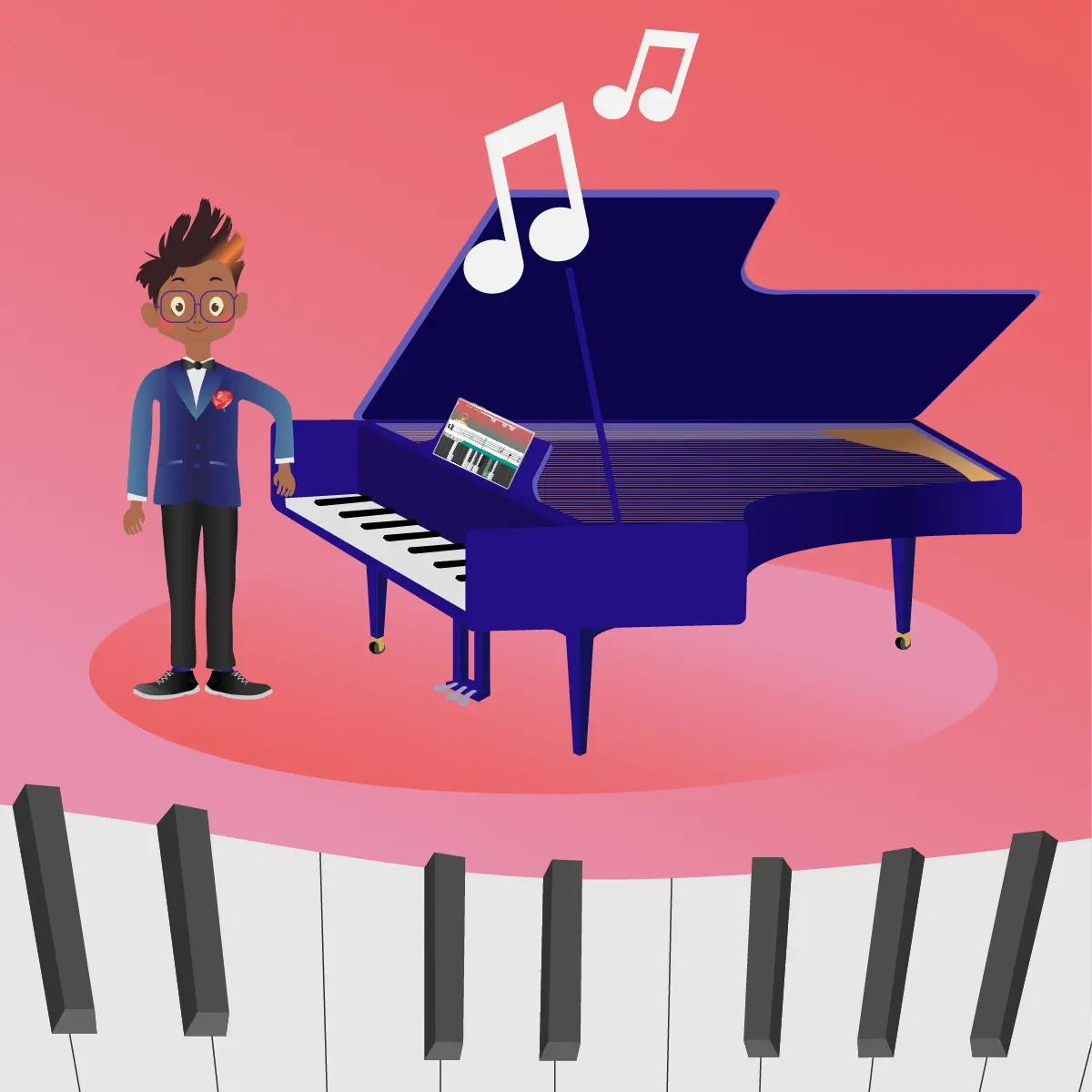It’s hard to imagine that just 30 years ago, the internet was little more than a concept that only super brainy computer types knew about.
This invention has become the major infrastructure for most of our daily tasks in less than half an average lifetime.
There’s very little in our lives these days that doesn’t have some form of digitisation, and we learned through the Covid-19 pandemic that more and more can actually be done online.
We’ve quickly adapted to zoom meetings, the possibilities for remote work are ever-expanding, and the outlook for the future is fascinating in terms of what’s possible.
Another sector that has begun to evolve in the past decade is education. There’s a whole lot of digital learning happening, and it’s not slowing down any time soon.
So what exactly is digital learning? What are the benefits of learning online vs the more traditional way? Read on to find out more.
What is Digital Learning?

Quite simply, digital learning uses new technologies and methods to help students learn in a different way. This new form of education has been rapidly replacing the more traditional form of ‘face-to-face’ lessons.
The incorporation of digital learning can be as simple as the use of tablets or iPads in the classroom instead of the good old fashioned notebooks and paper.
It can also be as involved as using complex software and equipment to facilitate areas of education previously unattainable to particular students.
The scope of how digital products and services can be used for educational purposes is limitless, and it has some incredible benefits for students.
1. Personalised Learning

One of the biggest benefits of digital learning is that it allows teachers or course providers to cater their learning plans or curriculum to the individual student.
They can take into account the ability of the student and how they are progressing, then use this to make adjustments to allow for hurdles or quick progress.
No two students are ever exactly the same, so why should the way they learn be.
The traditional face to face method has worked for us as a society for quite some time, but we now know that there are so many contributing factors that will determine the success of a student in their learning process.
In the old system, where you have one teacher for 30 to even 100 students, the pace of the class is always set by the students in the middle. If you are advanced, you have to wait for the others to catch up; if you’re struggling, sometimes you can get left behind because there’s just not enough time to catch you up.
With digital learning, the teacher is able to format their curriculum based on the needs of the individual. It also makes it easier for them to provide confidential individual feedback to each student.
Digital learning has shown that it’s able to provide a more holistic approach to education.
It might be ironic but using technology and machines helps to stop students from just being another cog in a wheel. Instead, it helps them to perform better and reach their full potential.
2. Breadth of Information

We have never had more information available to us in an instant in the history of our species. The internet is expanding every single day with free information.
At the time of writing this, over 63,000 searches are performed on Google each second. Yes, a large amount of those searches might just be people wanting to settle an argument or some of the other stuff people search the net for, but the main takeaway is that knowledge is free, ready and up to date.
Think about a time when you looked something up on Wikipedia, then clicked on a related link, and half an hour later, you are reading all about the Hindenburg disaster.
This wormhole of knowledge was never possible before the internet. It would have involved hours in a library or with your grandparents’ collection of Encyclopedia Britannica just to get an ounce of that information.
Digital learning taps into this easy access to information and helps students to use it effectively. A good digital learning strategy also teaches students how to be objective when searching the internet for information.
Overall, this approach provides relevant material across a limitless range of topics to help facilitate the best possible outcome in the learning journey.
3. More Engaging Lessons

The traditional model of education involves a classroom, books, paper, one teacher and students.
In the old days, there was a blackboard and chalk, now there’s a whiteboard and squeaky pens.
It’s a model we’re all used to, but for those of us who have finished our formal education, we know this wasn’t always the most engaging method.
Digital learning offers a larger range of delivery methods for learning. Imagery, audio and video content can all be integrated seamlessly into a lesson.
Some teachers are even able to find software that enhances the topic they are teaching in the form of games.
All of this helps to make learning more fun, which in turn will raise the retention of the content taught in the lessons.
4. Develops Accountability

When students learn digitally, they often don’t even realise that they are learning because the process is so engaging.
They will often seek to expand their own knowledge base simply because they enjoy the satisfaction that comes with knowing more.
The interactive nature of digital learning will stimulate most of the senses necessary to create a good habit.
Young students on this kind of educational path will experience problem-solving, concept maps, storytelling, gamification, role-playing, peer education, and a much higher frequency than those learning under the traditional format.
Digital learning also helps students to foster ownership over their education. If they don’t know why the sky is blue, they have all the technology and resources to find it out for themselves.
So maybe the next time your child asks you a question like that, perhaps you should consider saying, ‘I’m not sure, why don’t you go find out and then teach me?’
5. Learning Flexibility

As stated earlier, digital learning allows for more focus on the individual student.
This means that there’s a greater deal of flexibility in the delivery of lessons.
This can be as simple as using a different kind of software that you know they are more familiar with. It can also mean the ability to take into account neuro-divergence that can affect the way a student learns.
We now understand more about things like Autism Spectrum Disorder and ADHD; with digital learning, there’s more flexibility to enable students who experience conditions like this to still get the most out of their education.
6. Recorded Content

Many who have experienced online lessons will say how valuable it is that some of the lessons are recorded.
It’s easy to understand why; if you miss something in the lesson, you can just rewind and catch that point later.
It also lets you do additional study in your own time to catch up.
Say you didn’t quite understand a point that the teacher was making, but in order to get the rest of the lesson, you need to understand that point. When the lesson is recorded, you can take the time to expand on that point on your own, then revisit the lesson to further cement what you missed.
This is a benefit for students of all ages, especially kids. Children in early development greatly benefit from repetition. This allows them to have that in between lessons, which will help them progress much faster.
7. 24-Hour Resources

Not every student is the most productive at exactly the same time. Some people are better in the mornings; others have a sudden burst of productivity late at night.
The problem is that the traditional learning model doesn’t make allowances for this.
In the traditional learning format, you need to be ‘on’ during your lesson time. If you aren’t able to get to the necessary level of attentiveness, you might get left behind.
With online learning, there’s no ‘back of the class.’ The student can take things at their own pace.
Sure there are, of course, times where they need to be present or available when they might not be up to it; that’s just part of life, but they can also catch up in their own time because all of the resources they need are available to them 24 hours a day.
8. Connected Learning

Connection and belonging are incredibly important concepts for all learners.
We find comfort in developing relationships with people who are experiencing the same things as us. This is how we tend to form friends at school.
One of the hard things to deal with in learning environments is that not everyone is naturally gifted when it comes to opening up to strangers.
Transferring some of the connection to an online space has been shown to help promote connectivity and allow students to form friendships they otherwise would never have pursued before.
A recent study found that one-third of teenagers are more comfortable sharing information online than in person.
When they are taking part in online learning, they instantly become part of a community of like-minded individuals sharing the same experience as they are.
9. Easy to Track Student Progress

In the digital learning environment, it’s much easier for a teacher or assessor to mark a student’s strengths and weaknesses, but it’s also easier for them to track their general progress.
There’s an online record of all work that’s completed as well as attendance and the results of exams.
In the digital environment, this information is easy to access and view at a glance. With a few keystrokes, you can see exactly how far a student has come, what they need to work on and just how engaged they are in the content of the course.
It’s entirely possible that an online teacher will identify an area a student needs help with long before the student or their parents.
10. Improves Written Language Skills

Online learning normally involves large amounts of written communication.
Sure there are video conferencing elements, but a lot of the communication will come via messaging apps to get in touch with people fast.
There’s a great deal of learning that comes from communicating in a medium where you can’t rely on spoken word, facial emotions or hand gestures.
There’s a myriad of grammar, punctuation and even emojis that convey complex meaning and the best way to learn how to effectively use them is by practice.
Also, as sad as it might be to some people, the days of pen and paper are long behind us.
Students who come up through a digital learning environment will stand a better chance of being able to touch type, which is an essential skill for the job markets of the future.
11. Accessibility Through Modern Technology

The nature of today’s world is that of super-connectivity. Almost everything is starting to gear towards thinking on a global scale.
Businesses are opening branches abroad and accessing remote workers, so why shouldn’t education benefit from this too?
Virtual meeting rooms are the lifeblood of the working world right now, and they can also be useful for students.
They can enable you to chat with classmates about assignments, talk about homework or even just discuss your day.
We used to rely on exchange students to be able to experience other cultures and languages, but now, all of that is accessible to everyone, regardless of their income or ability to travel.
By the time digital students graduate, they will undoubtedly think globally and be more worldly than ever before.
12. Involves Educators and Parents

In the past, they had to exclusively be bound to a single classroom and try their hardest to educate a large group of students.
They had to take into account the strengths, weaknesses and abilities of each student ‘on the fly.’ If they were lucky, they might have a parent-teacher interview twice a year.
Digital learning uses available technologies to provide a digital learning environment that will free up time for teachers.
This time can be spent on tracking the progress of students but also keeping parents in the loop on their progress.
The twice-yearly parent-teacher interview can easily become a weekly check-in.
This kind of approach also allows students to feel a certain degree of autonomy while allowing their parents and teachers to communicate confidentially in order to provide the best possible learning outcome for the student.
13. Rapidly Increases the Sharing of Information

Six hundred years ago, the first printing presses revolutionised learning.
No longer was knowledge something that only the rich and powerful had access to; the rest of us could also grab a book and digest the nuggets of wisdom those before us had acquired.
Digital learning is having a similar effect on the way we are able to consume and share information.
It allows students to access more information, but it also enables them to cater it specifically to their individual needs.
It also saves time and money. Students no longer have to buy or rent large volumes of textbooks just to use about 30% of them before the information is no longer relevant.
The digital learning landscape has also made it possible for educators to adapt to different situations and share information rapidly.
This means that through things like a pandemic, there’s no need to cease education services.
This kind of platform creates a level playing field for each student and enhances their chances of success.
14. Increases Students Employability

We put an immense amount of responsibility on our school systems.
We expect them to equip our kids with all the necessary skills to become gainfully employed and have careers in the future.
This is one of the top priorities we have in our education system, and the job market has changed so much since we began teaching in the traditional way, so why should the way we teach adapt as well?
We often joke that there are a bunch of things we learned at school that we never had a need for later in life.
If my friend leave’s their house at 2.45pm and gets a train that travels 215km per hour, how long will it take them to reach my house?
Well, my friend wouldn’t take a train, they’re probably gonna be in an uber, and I don’t need to know a specific time that they will arrive, because I can track their journey on my phone.
The example above is extreme, and there is mathematical merit in the old fashioned velocity questions, but the point is that education needs to have more real-world applications now.
We are currently at a technological turning point in history, one that is changing almost everything.
We need to make sure the students of today are prepared for the job market that awaits them tomorrow.
The best way to provide this is to give them access to a digital learning platform. It will help them become familiar with new technologies and tune skills that will be necessary in the future.
15. It’s Fun and Engaging!

This is the no-brainer of all of the arguments for the benefits of digital learning. It’s fun, and at the end of the day, it’s a bit like the old saying, ‘you catch more flies with honey than you do with vinegar.’
Students who experience fun or joy within their educational environment retain information and succeed at a much higher rate than those who don’t.
We’ve understood the benefits of integrating play and games into education for aeons; why do you think we have nursery rhymes?
One perfect example of incorporating the fun factor into digital education is the Mussila Music School.
This award-winning app combines music theory, technology and play in an unbeatable combination that gives kids both a solid foundational music theory and a fun and engaging experience.
Mussila lets kids pick from a few different learning paths, and from the very beginning, they are immersed in this unique form of play learning.
It doesn’t require expensive instruments or lessons, and the best part is that it’s completely designed to be used without the need for parental supervision.
We know that music is beneficial for kids, and it actually helps them learn, so if you’re interested in exploring a digital musical learning environment, check Mussila out in your preferred app store, or contact a member of our team to discuss how we can transform musical education in your school.
Conclusion

From chalkboards and parchment paper to pads and laptops, the scope of how we learn has completely changed in the past century.
The major benefit of all of these changes is that today’s students will embark into the future with open minds and unlimited possibilities available to them.
It’s an exciting time to be a student!














